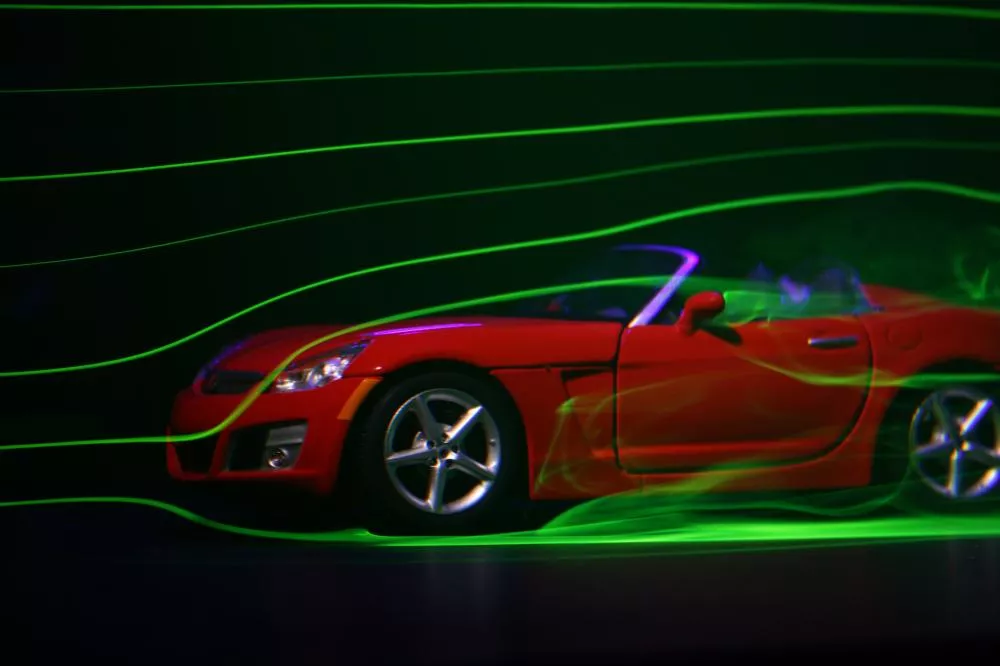You’ve seen those cars on Instagram - those sedans that have suspensions so low they could touch the ground. It’s a rather strange fetish, but that custom-made, racecar-esque look to them conjures a powerful vision so reminiscent of the Lotus 72 you can only dream of having, let alone driving-at the very least, that revitalized your boyhood dreams of being a Formula One racer.
And as ridiculous as the thought of a sedan actually coming close to the realm of Ferraris and McLarens, you just can’t help but dream can you?
It is not surprising, as vehicles with lower suspension visual catnip for the eyes for any car enthusiast.

Honda Acura with lowered suspension
While practically drooling on the pics (I hope none of y’all peed your pants at the thought), of course at some point you have asked yourself, should you lower your own car’s suspension for the sake of recreating your childhood dream?
Anyway, if you have particular concern over car suspension, here is a post suggested for your further reference: 5 easy tips to diagnose your car suspension problems.
I. Upsides of Lowering your car
1. Lowering the center of gravity of your car
Allow me to relive my dream of becoming a physics professor for a second here and school you on the physics behind your car. The distance or space between your fender & your tire, also known as a wheel gap, is not only known as an unsightly view but also puts your car at a higher center of gravity.
A higher center of gravity means a higher risk of body roll when you are cornering. To prevent that from happening, lower your suspension. You can corner better; there is less body roll, and handling experience is generally more stable.

Cars with lower suspension have lower center of gravity
Lowering the center of gravity also helps with your braking. When you stop, all the weight of your car moves forward, therefore it puts weight in your suspension
2. Improving the car's aerodynamics
When the vehicle is closer to the ground, it also closes in the gap between the body and the ground which air can pass through, which can cause aerodynamic drag when the vehicle is traveling. Less wind drag means more mileage to your car, therefore better fuel economy.

Cars with lowered suspension decrease aerodynamic drag
3. Enhancing the aesthetics
If I haven’t reiterated enough, we do it mostly for cosmetic purposes. We do it for the Instagram likes. We do it because in a parking lot flocked with an array of ordinary-looking cars and SUVs, yours just stand out and looks a thousand times cooler. This one is highly subjective, needless to say.
So with all that being said, why aren’t manufacturers catching the trend and making lowered cars more accessible? This video may provide insight. Oh, and please prepare to laugh and cringe.

Ford Mustang Sport with lowered springs
Video: 5 Reasons NOT to lower your Car
Okay, so the title may not exactly be accurate, as the cars there are slammed and not lowered. Also, this video might be a total exaggeration but you get the point.
II. Downsides of Lowering your car
1. Harsher Rides
The road is not your race track. Especially not our highways, let alone city roads. Anyone who has ever driven around Metro Manila can honestly attest to this. Lowering your suspension may be good on very, VERY specific situations and unfortunately, Metro Manila is not one of them. The picture below may probably give you a better idea of what I am talking about.

Potholes along Metro Manila
The wear and tear are more than enough strain for vehicles with normal suspension level, so you can just imagine the damage your car can suffer from when bottoming out or clearing from common obstacles on the road. And dare I mention the less than comfortable, bumpy rides you and your passengers are going to experience, as lowering your car significantly alters the vehicle’s spring rate. I don’t think you’ll impress anyone inside the car when they actually ride with you.
2. Uneven Tire Wear
There have been cases in the past when lowering the car’s suspension causes tires to wear unevenly. The excessive negative camber in your tires can put unnecessary pressure on them. The uneven pattern caused by a smaller contact patch in the tires can adversely affect your tire life so expect your tires to retire earlier than it should.
3. Increased risk of flood-related damage
In case you haven’t realized, we live in a country buffeted by monsoons, typhoons, and other nasty disasters. It does not help that we have such an amazing (not) flood control system, so really every single vehicle is not safe from the torrential wrath brought by these baddies. Lowering the distance between your engine and the flood-infested roads may not be a good idea.

Lowering your car means you have tougher time dealing with flood-related damage
4. Increases the susceptibility of your vehicle to be damaged
I don’t even know how to begin on this one. Steering geometry may be changed, so besides the fact that your car cannot be steered safely, you are putting the entire system to increased and unnecessary wear and tear. Besides the steering system, the entire suspension system may also be compromised as the tires can rub against the fender and metal sheets. Your car’s shock absorber may also be compromised because they experience more pressure.
III. Verdict
Sure there are added benefits to getting your car lowered but compared to the risks, these advantages are negligible. I hate to be the one to put a damper on your F1 dreams but in a matter of practicality and road safety, lowering your car may not really be the best thing that you can do for yourself, your passengers and the other commuters that you might come across, once you take your depressed vehicle for a ride.
One may argue that the passion for automotive is never about practicality and in some ways, I agree. Unfortunately, Metro Manila is just not an ideal place to take your lowered car for a spin. And the costs involved may already discourage you from lowering your car.
Don't forget to visit our website Philkotse.com frequently to equip yourself with simple yet useful car tips and advice!












